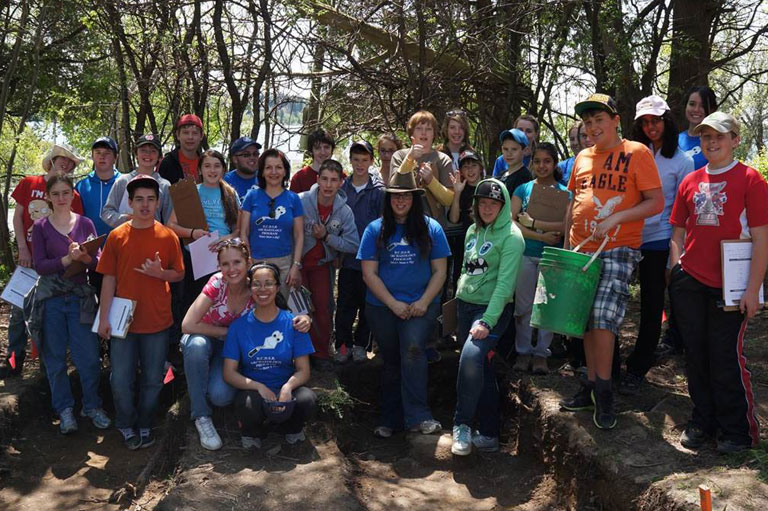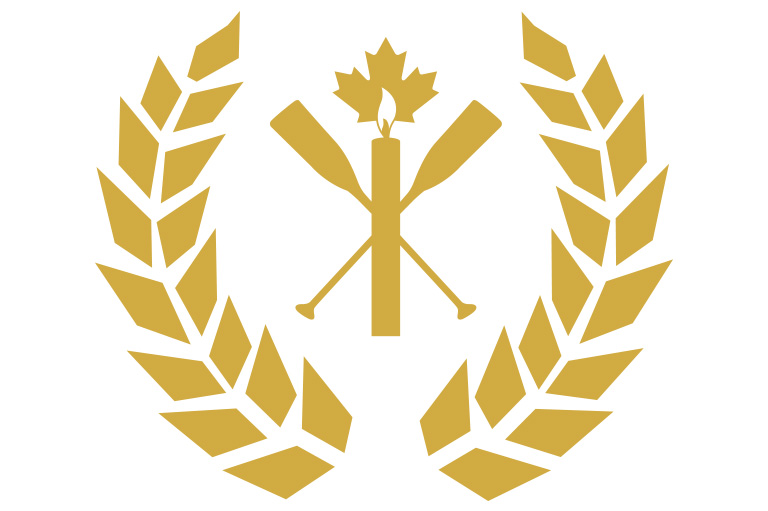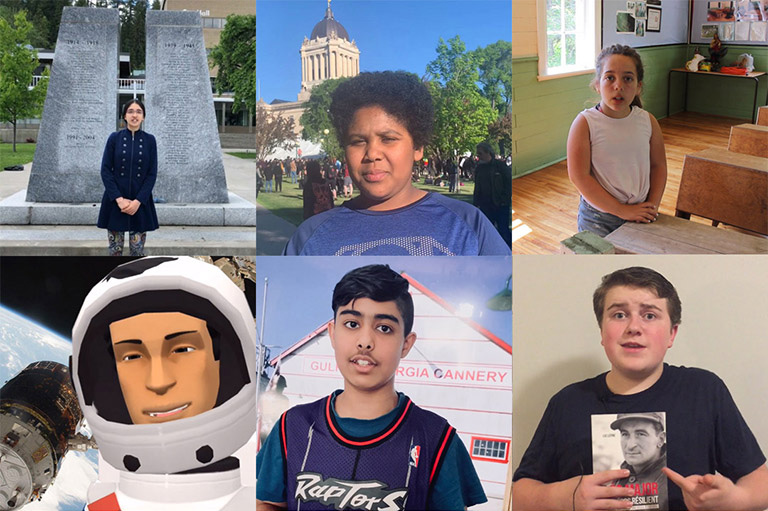Digging up the Past

When Cathy MacDonald travels to schools to introduce students to archaeology, she doesn’t travel light.
The Durham, Ontario, teacher lugs along seven large, flat, containers, each filled with 50 pounds of sand. These are the training-grounds where she will teach students all they need to know to participate in a real archaeology excavation.
“We layer up smashed pottery. They learn trowelling methods. They have to record every piece, and they reconstruct the pottery piece,” said MacDonald, a retired teacher who won the 2013 Governor General’s History Award for Excellence in Teaching and now works on contract with the Durham Catholic District School Board.
“We start off by discussing: What is archaeology? They learn that it’s not what you find; it’s what you find out. Every object is a window into a world.”
Over three days of training, students are introduced to the theory and practice of archaeology, professional standards, research methods, and the type of archaeological artifacts that are found in Canada. Then, in May, the students split up into teams of four and head out to an archaeological dig, where they participate in an excavation under the supervision of a licensed archaeologist. The dig is a Canadian Aboriginal site, which is being excavated for educational purposes with the consent of the community.
The students employ screening techniques to find artifacts buried in the dirt. They use their judgement to determine if pieces of rock or animal bone, for example, are simply natural materials, or if they have been carved into artifacts like arrowheads or needles. They sketch each artifact, write a field report, and present their findings at the end of the day.
“They start to realize that history is interpretive,” said MacDonald. “And they realize the incredible skill and adaptability of Canada’s Aboriginal people at that time.”
Themes associated with this article
Advertisement




